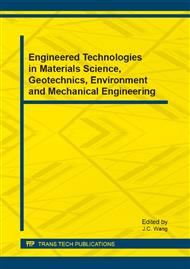p.13
p.16
p.20
p.24
p.28
p.33
p.38
p.42
p.46
Experimental Study on Gas Production from Methane Hydrate Bearing Sand by Depressurization
Abstract:
The simulate experiments of gas production from methane hydrates reservoirs was proceeded with an experimental apparatus. Especially, TDR technique was applied to represent the change of hydrate saturation in real time during gas hydrate formation and dissociation. In this paper, we discussed and explained material transformation during hydrate formation and dissociation. The hydrates form and grow on the top of the sediments where the sediments and gas connect firstly. During hydrates dissociation by depressurization, the temperatures and hydrate saturation presented variously in different locations of sediments, which shows that hydrates dissociate earlier on the surface and outer layer of the sediments than those of in inner. The regulation of hydrates dissociation is consistent with the law of decomposition kinetics. Furthermore, we investigated the depressurizing range influence on hydrate dissociation process.
Info:
Periodical:
Pages:
28-32
Citation:
Online since:
February 2013
Authors:
Keywords:
Price:
Сopyright:
© 2013 Trans Tech Publications Ltd. All Rights Reserved
Share:
Citation:


